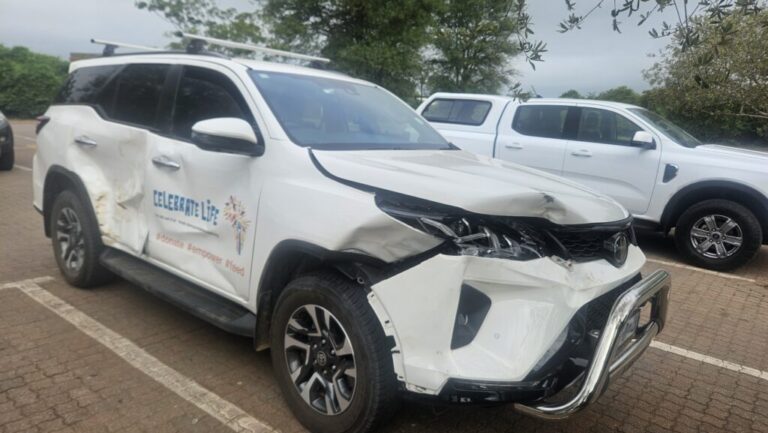Visitors to the Kruger National Park were fortunate to escape injury when two zebras collided with their new Toyota Fortuner.
The impact was so hard that the extent of the damage is estimated to be at R190 000.
The car only had 3 000km on the clock!
While the vehicle sustained considerable damage, the fate of the zebras is unknown.
Cherry Armstrong, who supports women empowerment in rural communities in South Africa, through her organisation Celebrate Life, sent her account and photos of the damage to Latest Sightings.
The incident occurred on the H4-2, about 7km from Lower Sabie.
Straight road
Armstrong said she was driving on a “straight piece of road… at around 30km/h” prior to the accident.
On her left, she said, were many zebras.
As she watched the zebras, she heard and felt an “almighty crash” on the right side of the vehicle.
Armstrong said she didn’t see the impact.
“They came so fast out of the grass onto the tar, we only saw them on impact.”
First point of impact
Armstrong suspects that the first zebra collided with the front righthand side of the SUV.
As seen below, this caused significant damage to the front bumper and fender.
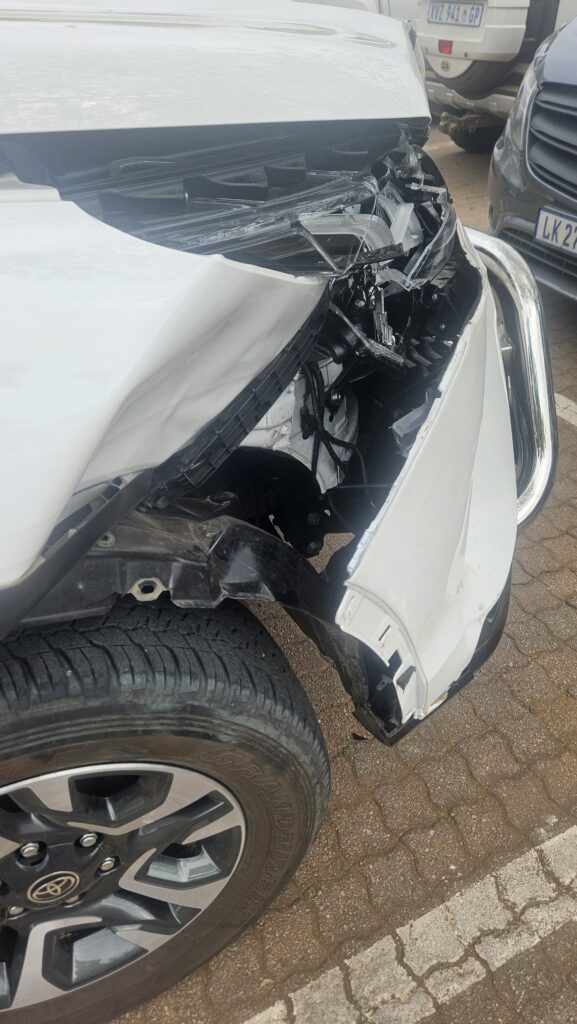
Momentum
She thinks that after the initial impact, the zebra’s momentum caused it to spin before crashing into the doors on the right-hand side of the vehicle.
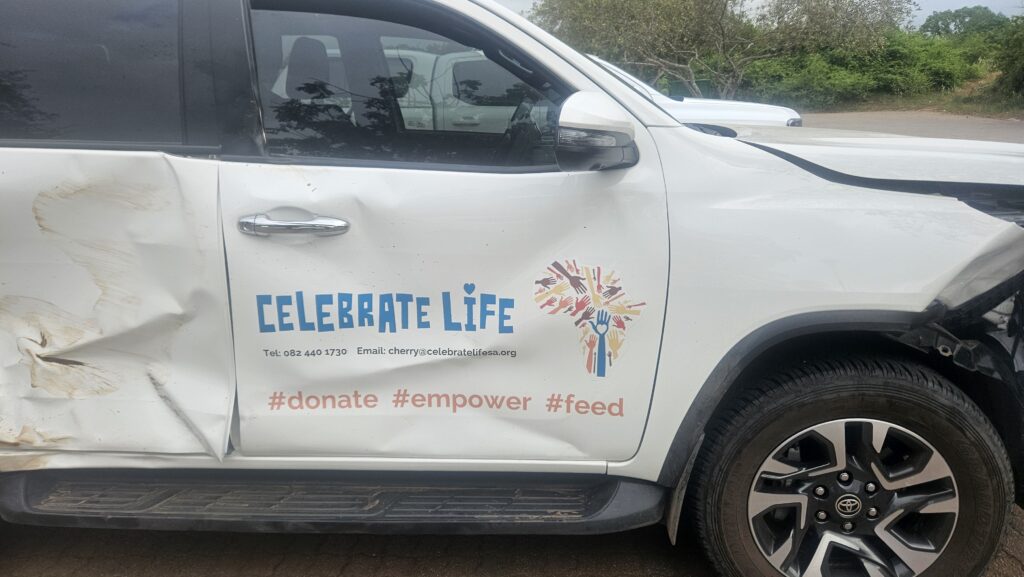
Armstrong thinks the zebra then fled into the grass, but suspects it must have sustained serious injuries.
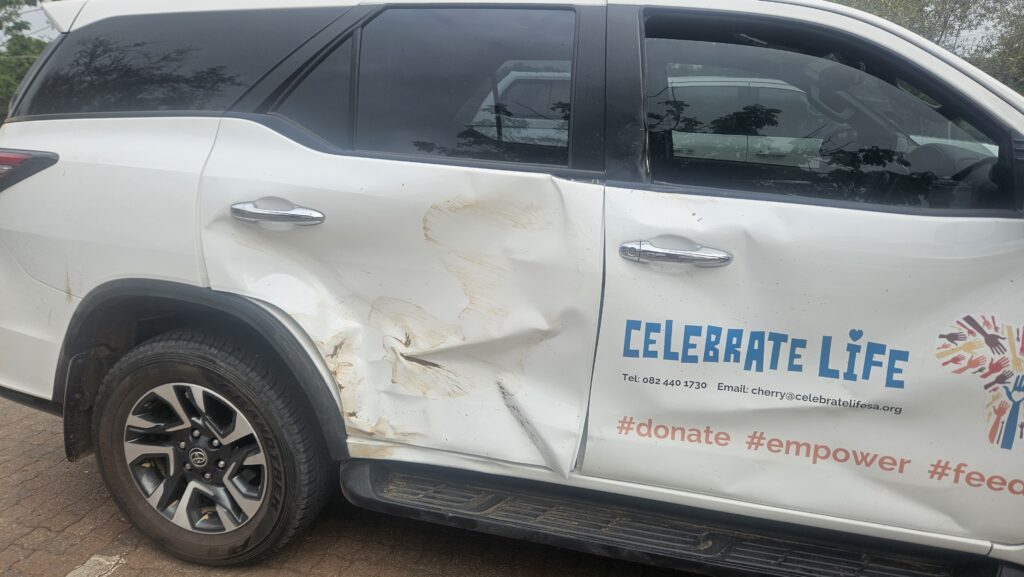
Second zebra
Emphasising that she can’t confirm as much, Armstrong added, “I think the second one may have hit the back corner of my car.”
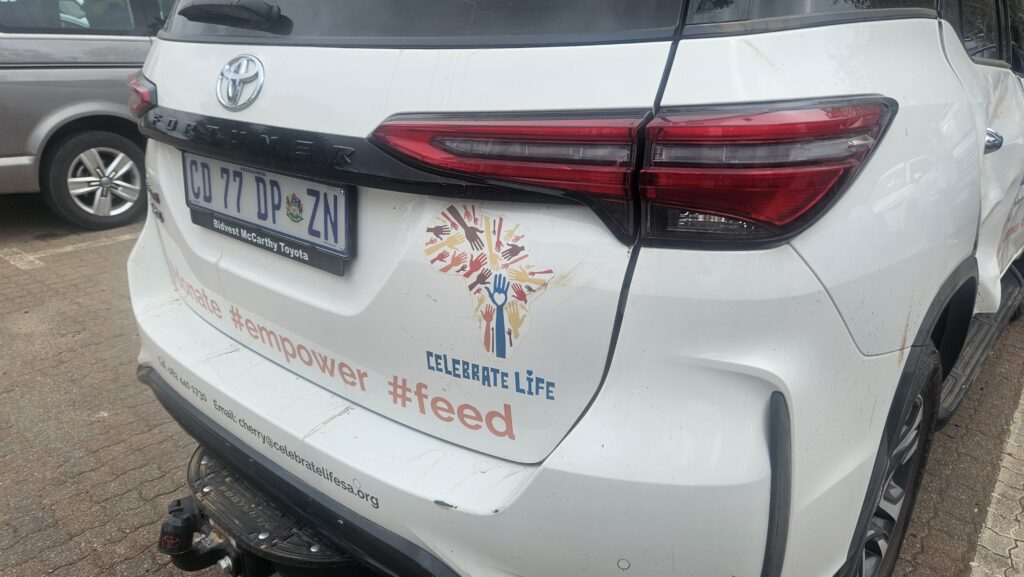
Help arrives
Armstrong said an unknown safari guide, “heard the impact and as he rounded the corner.”
“He blocked the… road with his vehicle to protect me as I was in the road picking up the metal!”
The guide believes the zebras bolted when a lion chased them.
“I have no idea who the guide was who helped me but a big thank you to him.”
Damage estimate
The damaged vehicle was transported to a vehicle dealership in Malelane.
Armstrong said that the damage would cost an estimated R190 000 to repair.
Adding salt to the wounds, she said, is the fact that the vehicle was nearly brand new and only had 3 000km on the clock.
Grateful
Nevertheless, Armstrong remains pragmatic.
“It could’ve been so much worse. A couple of seconds difference could have seen the zebra through the windscreen – we were very lucky.”
“My advice to all visitors is to always respect the speed limit as you never know what’s out there!`
Avoiding accidents
Drivers must adhere to normal road laws when traveling in the Kruger Park.
Perhaps the most important of these is to stay within the speed limit.
The applicable rules are printed on the documentation received on arrival at the park.
Most frequently, people speed when rushing to reach a gate before closing time. As such, always allow adequate time to reach your destination.
Be mindful that animals have the right of way at all times
After an accident, the most important thing is to remain safe. If possible, stay in your vehicle until help arrives – bearing in mind dangerous animals may be nearby.
All traffic accidents, whether with wildlife or other drivers, must be reported within 24 hours to the Skukuza Traffic Department.
The emergency call centre number is 013 735 4325.
The Kruger National Park is one of the largest games reserves in Africa.
It covers an area of 19 623 km2 in the provinces of Limpopo and Mpumalanga and extends 360km from north to south and 65km from east to west.
To the west and south of the Kruger National Park are the provinces of Limpopo and Mpumalanga, respectively. To the north is Zimbabwe and to the east is Mozambique.
The administrative headquarters are in Skukuza.
It became South Africa’s first national park in 1926.
LOOK | Kruger Park: BATS hang from ceiling at Skukuza Airport – PICTURE
The park has nine main gates allowing entrance to the various camps.
They are: Crocodile Bridge, Kruger, Malelane, Numbi, Orpen, Pafuri, Phabeni, Phalaborwa and Punda Maria.
REMEMBER THIS? | Skukuza Golf Club makes headlines as lions take down giraffe
The Kruger National Park has 12 main rest camps
They are:
All the main rest camps have electricity, a first-aid centre, a shop, braai and communal kitchen facilities, a laundromat/laundry tubs, a restaurant and/or self-service cafeteria, public telephones and a petrol station. Information centres manned by information staff are at Letaba, Skukuza and Berg-en-Dal.
The Kruger National Park has 4 satellite camps.
PICTURE | Kruger Park game ranger shares picture of ‘Silver-Eye’ lion
The Kruger National Park has 5 bushveld camps
Bushveld camps provide accommodation in smaller, more remote rest camps. One or more accommodation units may be reserved. Bush camps do not have shops or restaurants. Access to all bushveld camps is restricted to overnight visitors with reserved accommodation. Electrical equipment such as hair-dryers, cannot be used except at Talamati, Biyamiti and Bateleur. Open verandas often serve as kitchen/dining room. All units have a refrigerator, cooking utensils, crockery, cutlery and a stove, either a two-plate stove without an oven or a four-plate stove with an oven in the larger units. Al l units have private ablution facilities. Communal freezing facilities are offered at Biyamiti, Shimuwini, Talamati and Sirheni. Cellphones can be charged at reception at Shimuwini and Sirheni.
PICTURE | Kruger Park: African Rock Python crosses the road
Are you a frequent visitor to the Kruger National Park? If so, which is YOUR favourite camp?
Let us know by leaving a comment below, or send a WhatsApp to 060 011 021 1
Subscribe to The South African website’s newsletters and follow us on WhatsApp, Facebook, X and Bluesky for the latest news.

